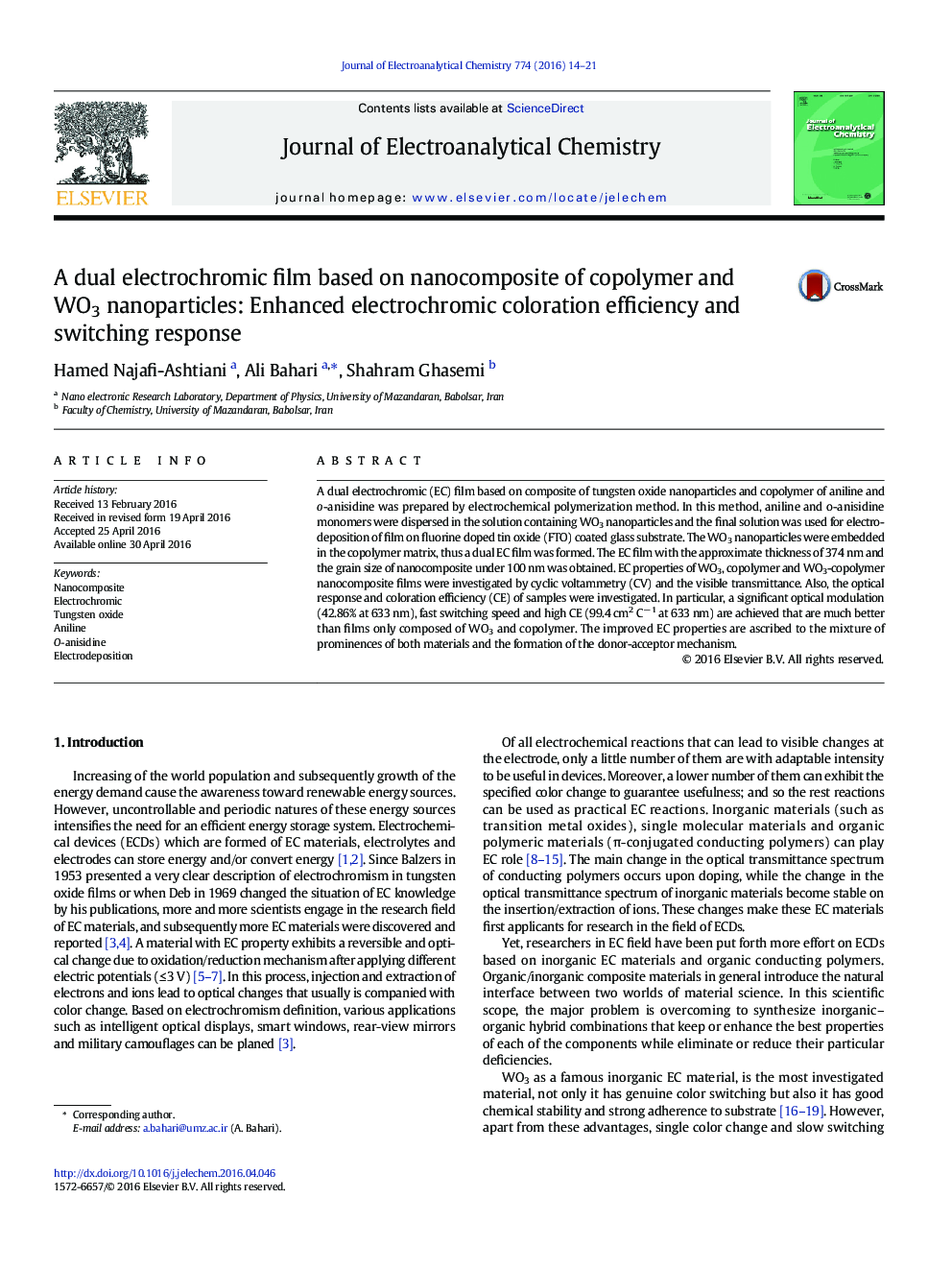| Article ID | Journal | Published Year | Pages | File Type |
|---|---|---|---|---|
| 217794 | Journal of Electroanalytical Chemistry | 2016 | 8 Pages |
•The WO3-copolymer nanocomposite thin film is successfully prepared.•Enhanced electrochemical properties are achieved for WO3-copolymer nanocomposite.•The response time of nanocomposite is modified comparing to WO3 and copolymer films.•The CE of the nanocomposite film is improved during coloration.
A dual electrochromic (EC) film based on composite of tungsten oxide nanoparticles and copolymer of aniline and o-anisidine was prepared by electrochemical polymerization method. In this method, aniline and o-anisidine monomers were dispersed in the solution containing WO3 nanoparticles and the final solution was used for electrodeposition of film on fluorine doped tin oxide (FTO) coated glass substrate. The WO3 nanoparticles were embedded in the copolymer matrix, thus a dual EC film was formed. The EC film with the approximate thickness of 374 nm and the grain size of nanocomposite under 100 nm was obtained. EC properties of WO3, copolymer and WO3-copolymer nanocomposite films were investigated by cyclic voltammetry (CV) and the visible transmittance. Also, the optical response and coloration efficiency (CE) of samples were investigated. In particular, a significant optical modulation (42.86% at 633 nm), fast switching speed and high CE (99.4 cm2 C− 1 at 633 nm) are achieved that are much better than films only composed of WO3 and copolymer. The improved EC properties are ascribed to the mixture of prominences of both materials and the formation of the donor-acceptor mechanism.
Graphical abstractFigure optionsDownload full-size imageDownload as PowerPoint slide
